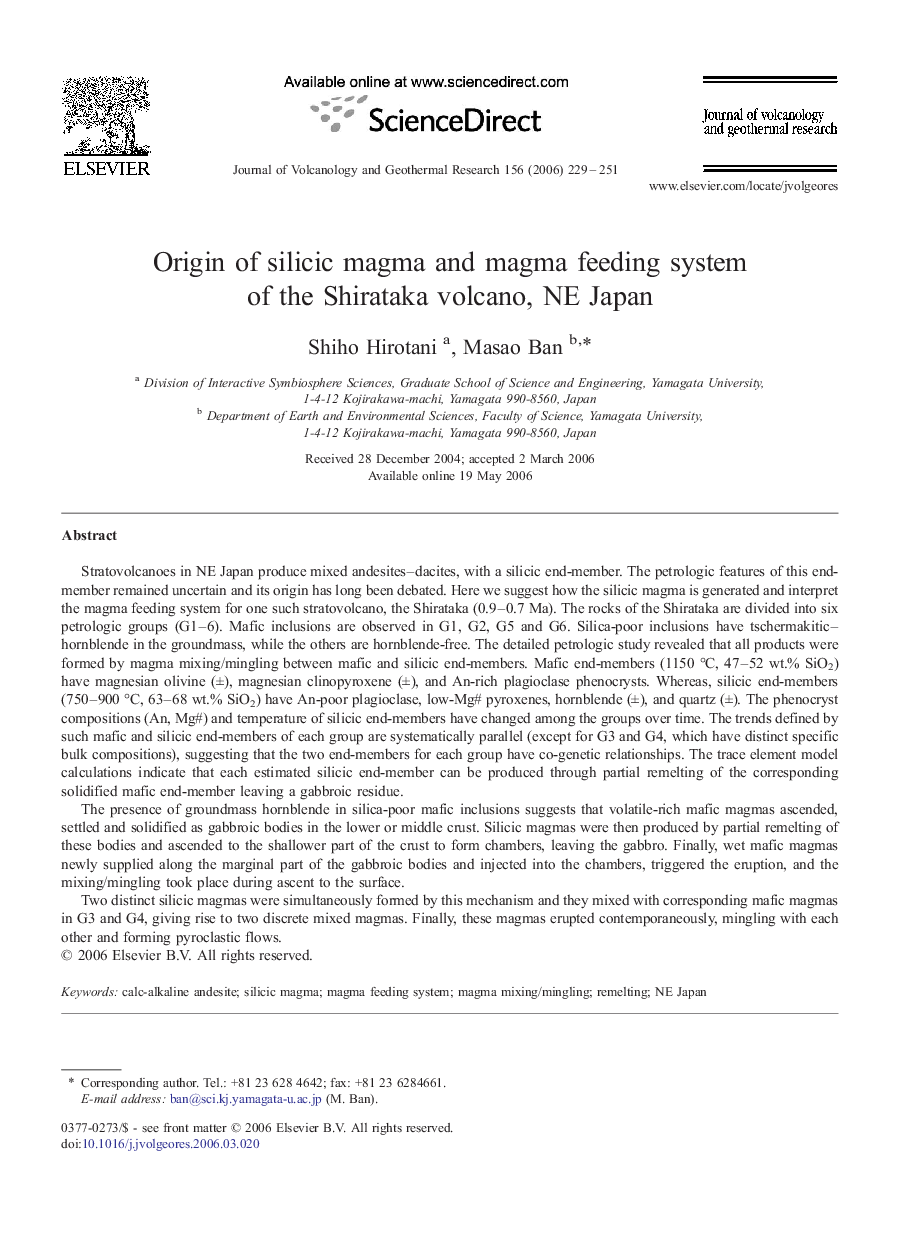| کد مقاله | کد نشریه | سال انتشار | مقاله انگلیسی | نسخه تمام متن |
|---|---|---|---|---|
| 4715039 | 1638473 | 2006 | 23 صفحه PDF | دانلود رایگان |

Stratovolcanoes in NE Japan produce mixed andesites–dacites, with a silicic end-member. The petrologic features of this end-member remained uncertain and its origin has long been debated. Here we suggest how the silicic magma is generated and interpret the magma feeding system for one such stratovolcano, the Shirataka (0.9–0.7 Ma). The rocks of the Shirataka are divided into six petrologic groups (G1–6). Mafic inclusions are observed in G1, G2, G5 and G6. Silica-poor inclusions have tschermakitic–hornblende in the groundmass, while the others are hornblende-free. The detailed petrologic study revealed that all products were formed by magma mixing/mingling between mafic and silicic end-members. Mafic end-members (1150 °C, 47–52 wt.% SiO2) have magnesian olivine (±), magnesian clinopyroxene (±), and An-rich plagioclase phenocrysts. Whereas, silicic end-members (750–900 °C, 63–68 wt.% SiO2) have An-poor plagioclase, low-Mg# pyroxenes, hornblende (±), and quartz (±). The phenocryst compositions (An, Mg#) and temperature of silicic end-members have changed among the groups over time. The trends defined by such mafic and silicic end-members of each group are systematically parallel (except for G3 and G4, which have distinct specific bulk compositions), suggesting that the two end-members for each group have co-genetic relationships. The trace element model calculations indicate that each estimated silicic end-member can be produced through partial remelting of the corresponding solidified mafic end-member leaving a gabbroic residue.The presence of groundmass hornblende in silica-poor mafic inclusions suggests that volatile-rich mafic magmas ascended, settled and solidified as gabbroic bodies in the lower or middle crust. Silicic magmas were then produced by partial remelting of these bodies and ascended to the shallower part of the crust to form chambers, leaving the gabbro. Finally, wet mafic magmas newly supplied along the marginal part of the gabbroic bodies and injected into the chambers, triggered the eruption, and the mixing/mingling took place during ascent to the surface.Two distinct silicic magmas were simultaneously formed by this mechanism and they mixed with corresponding mafic magmas in G3 and G4, giving rise to two discrete mixed magmas. Finally, these magmas erupted contemporaneously, mingling with each other and forming pyroclastic flows.
Journal: Journal of Volcanology and Geothermal Research - Volume 156, Issues 3–4, 1 September 2006, Pages 229–251